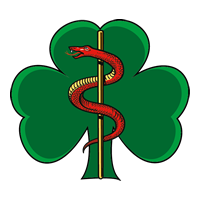Options for Change was a restructuring of the British Armed Forces in summer 1990 after the end of the Cold War.

The 32nd Signal Regiment is a British Army Reserve Regiment of the Royal Corps of Signals. The regiment forms part of 1st Signal Brigade, providing military communications for national operations.

The 5th Infantry Brigade was a regular infantry brigade of the British Army that was in existence since before the First World War, except for a short break in the late 1970s. It was an Airborne Brigade from the early 1980s until amalgamating with 24th Airmobile Brigade, in 1999, to form 16 Air Assault Brigade.
The 28th Division was an infantry division of the British Army raised for service in World War I.
152 Regiment RLC is a Northern Irish reserve British Army regiment of the Royal Logistic Corps. The regiment is paired with the regular unit 9 Regiment RLC.

The 107th Brigade, later 107th (Ulster) Brigade was an infantry formation of the British Army which saw service in the First World War. The brigade was later reformed during the Cold War and finally disbanded in 2006, following the drawdown of Operation Banner.

The 2nd Cavalry Division was a division of the regular British Army that saw service in the Peninsular War and in World War I, when it also known as Gough's Command, after its commanding general. It was part of the British Expeditionary Force that served in France in from 1914 to 1918. It was involved in most of the major actions where cavalry were used as a mounted mobile force, and also many where the troops were dismounted and effectively served as infantry.
The Northern Army Group (NORTHAG) was a NATO military formation comprising five Army Corps from five NATO member nations. During the Cold War NORTHAG was NATO's forward defence in the Northern half of the Federal Republic of Germany (FRG). The Southern half of the Federal Republic of Germany was to be defended by the four Army Corps of NATO's Central Army Group (CENTAG). During wartime NORTHAG would command four frontline corps and one reserve corps. Air support was provided by Second Allied Tactical Air Force.

The structure of the British Army is being reorganised to the Future Soldier structure. The Army is commanded by the Chief of the General Staff (CGS), with Army Headquarters which is located in Andover, Hampshire. Subordinate to that post, there is a Commander Field Army, and a personnel and UK operations command, Home Command.
The following is a hierarchical outline for the structure of the British Army in 1989. The most authoritative source for this type of information available is Ministry of Defence, Master Order of Battle, and United Kingdom Land Forces, HQ UKLF, UKLF ORBAT Review Action Plan, HQ UKLF, 1990.
201 (Northern) Field Hospital is a unit of the Royal Army Medical Corps within the Army Reserve of the British Army.
202 (Midlands) Field Hospital is a unit of the Royal Army Medical Corps within the Army Reserve of the British Army.

204 Field Hospital was a unit of the Royal Army Medical Corps within the Army Reserve of the British Army.
205 (Scottish) Field Hospital is a unit of the Royal Army Medical Corps within the Army Reserve of the British Army.
212 (Yorkshire) Field Hospital is a unit of the Royal Army Medical Corps within the Army Reserve of the British Army.
Future Soldier is a reform of the British Army resulting from the Integrated Review of Security, Defence, Development and Foreign Policy published in March 2021. The aim of the reform is to create a more lethal, agile and expeditionary force, able to fight and win wars and to operate in the grey-zone between peace and war. Future Soldier was published on 25 November 2021 and deals with the organizational changes of the British Army, with changes to personnel and equipment were set out in the Defence in a Competitive Age paper published on 22 March 2021.

210 Field Hospital is a unit of the Royal Army Medical Corps within the Army Reserve of the British Army.







